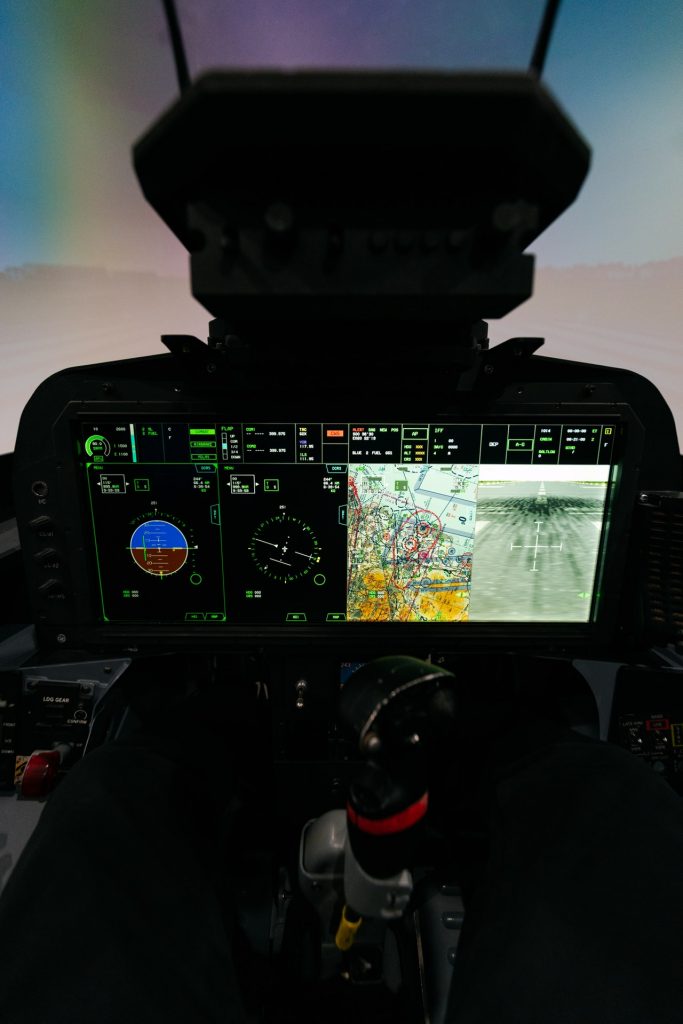Avionics is a specialization of maintenance and repair that focuses on aircraft electronics. An avionics technician will install, inspect, maintain, and repair electronic components within aircraft, including but not limited to navigation systems, radio, autopilot systems, and any other electronic systems and connecting cables. The job requires a great deal of precision since technicians typically work on equipment that is vital to the normal operations of the aircraft.
While it isn’t actually required, avionics technicians often possess a secondary degree, and they’ll receive avionics certification training through an FAA-approved program. Through these programs, students will learn about the standards and best practices set in place to ensure the safe operation of airborne systems and their electromechanical systems. Applicants to a training course typically have at least a two-year degree, though it is possible for those with a high school diploma or equivalent to be trained on the job. Aspiring technicians typically receive additional education to improve their salaries and opportunities in the field.
Specialty Areas
Avionics technician is a bit of an umbrella term. While different technicians will have some overlap in their jobs, and they all essentially work on airborne electronic systems, there are a few different focus areas.
System Troubleshooters: These technicians generally have specific knowledge about aircraft software design and communication systems. These technicians understand how each component of the aircraft interacts with others, and they use their years of experience to diagnose and repair some of the most complex problems.
Line Technicians: These technicians can perform aircraft inspections and diagnose basic problems. They generally work at a fixed location and help coordinate aircraft movement and ramp operations via radio. They’ll also fuel and service aircraft, including towing if necessary.
Bench Technicians: These technicians make repairs on faulty equipment outside of the aircraft. This will often include repairs to non-critical systems after the craft has landed.
What is DO-178C?
While not all avionics technicians need to be especially familiar with the DO-178C, it can give them a much better understanding of the production of software, equipment certification process, as well as quality assurance. This can be especially useful for system troubleshooters and give any technician an increased level of confidence.
The DO-178C is a document published jointly by the RTCA and EUROCAE for the certification of avionics systems. It’s an update and replacement for the DO-178B that has been in effect since 2012. The 178C updated the glossary of the document and made an effort to use more consistent language to avoid confusion.
Objectives of DO-178C
The main goal of the 178C is to provide as detailed and readable guidelines about avionics software development as possible. The document provides software developers with steps to take their projects from the initial design phase all the way to verification. With little government oversight, the document is written by industry experts and designed for efficient approval of software. The document also details various software levels by their level of importance and details the consequences of failures.
Catastrophic: Level A failures or malfunctions are likely to cause death as well as the total loss of the aircraft.
Hazardous: Level B failures have large scale negative impacts on safety and performance and can result in serious injuries or death.
Major: Level C failures significantly impact safety and can lead to increased crew workload and minor injuries.
Minor: Level D failures slightly reduce performance or safety margins and may cause inconveniences.
No Effect: Level E failures pose no immediate threat and can be assessed when the aircraft lands.
DO-178C Training can be acquired through AFuzion, who offers attendees the option of public or private training. 178C training courses cover the most up-to-date information available to train engineers on airworthiness requirements as well as certification and compliance. Training programs can also cover other certification documents including the ARP-4754A.






